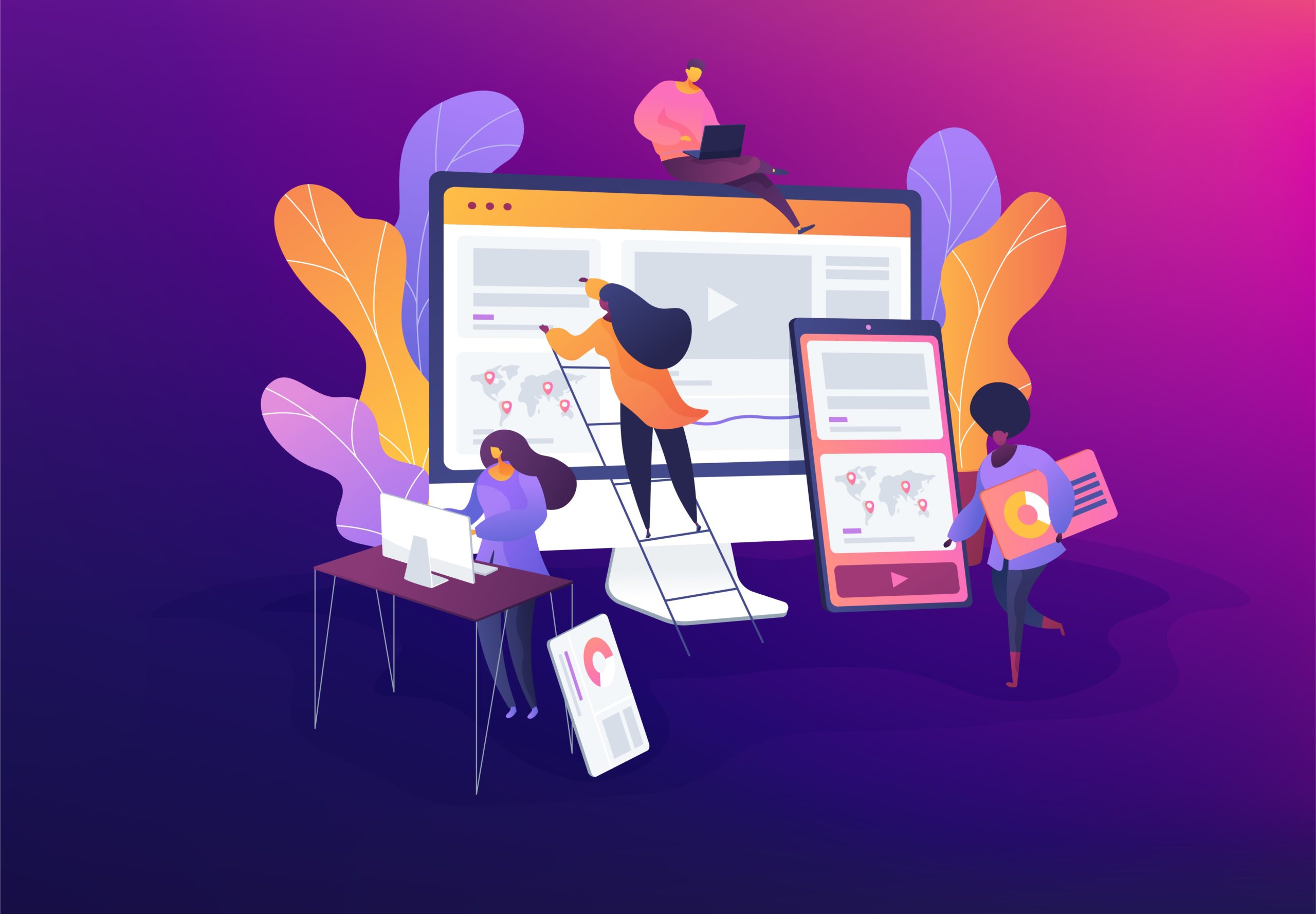Everywhere consumers go, businesses are vying for their attention. From bus stop ads to stickers on laptops, it’s all about being seen – getting noticed. Retaining viewer attention is as important but harder to do. Both of these factors are as essential to websites as they are to ads, and you can achieve both through movement.
That’s where the power of motion in design, or animation, comes in.
Businesses first started using website animations to attract attention when Flash animation was invented in 1996. Back then it was vector-based and nonresponsive on mobile devices. Still, it was new and exciting, and just like that, it was everywhere and overused. Audiences tired of it.
Website animations have come far since then. Now web designers have specialized animation tools and skill sets for creating content with responsive capabilities.
Modern animation reveals itself in motion graphics, web page transitions, special notifications and responsive abilities like the hover effect. They vary in complexity, timing and purpose – but good animation always has a purpose.
Pros of Animation in Web Design
The purpose for using animation on your website can vary depending on the type of animation you use and your goals. When done right, there are several pros to using website animations:
They Can Showcase Unique Features
You can use website animations to showcase your product in unique ways or at unique angles. Animation can bring awareness to the purpose and features of your product or help convey your brand story. Many great websites get creative in how they implement animation in their web design.
Outside of your product, an animated website does wonders for your brand perception. When done well, it not only indicates to the user that you’re not a scam but that you’re a credible authority in your industry. It functions to set you apart from the competition and builds trust.
They Can Enhance Design
The right animation effects breathe life into your website design, reinforcing it in a way that leaves a lasting impression. It may seem obvious, but an attractive website is one that people prefer to look at and thus stay on for longer and revisit.
The key, here, is that the animation enhances your site’s design and usability but doesn’t define it. Animation holds a lot of moving parts and should one of them break down, even temporarily, you don’t want the usability of your site to suffer.
They Can Improve Engagement and Conversion
As humans, we’re designed to detect movement. It’s that detection of movement (aka potential threats) that has allowed our survival throughout history.
And it’s the same reason why eye-catching animation has the power to engage users more than a static screen. Throw in interactive design and you’ll increase a visitor’s interest in engaging with your site for longer.
One of the best ways to incorporate animation in web design is to use its motion to guide users’ eyes to where you want them to look on a web page. An understanding of the psychology behind how a user interacts with web design is crucial to making an effective website.
Cons of Animation in Web Design
Now, hold your horses there. We get that you’re excited to implement this amazing new design feature, but adding animation to your website is a delicate task. For when done wrong – and it’s easy to do wrong – the cons are destructive.
Too Much Can Distract Users
The same way animation can guide users down a page, it can distract from your message. Remember that it’s what draws a user’s attention, so you have to make sure that it’s not drawing that attention away from your copy and CTAs.
At its worst, ineffective or overcrowded animation can even annoy users and cause them to leave your website for another. This is prevalent among self-made sites lacking in user experience.
They Can Slow Loading Speeds
Another symptom of poorly done animation is slow loading times for web pages. Slower loading times disrupt the user experience, is annoying and will increase bounce rates. Long loading times will also impact Google crawlers and decrease your ranking in Google SERPs.
For best results with visitors and search engines, you should keep your web page loading speed at or below 2 seconds.
Should You Use Website Animations?
So, should you use animation on your website? The answer comes down to the user experience you can and want to provide. At Boldist, we believe that website animations can do great things for your business, but only if it’s done right.
Consider these questions before adding animation to your site:
- What is its purpose?
- Does it guide users in the right direction?
- Does it benefit users or our message?
- Will it distract or hurt usability?
- Can we use it without hurting load speeds?
- Can we do it well?
Before the lure of an animated site takes over, map out your ideal user’s journey and see if you can help guide it.
Build a Website That Converts
Good animation in the right place at the right time can make your website’s UX seamless and memorable. To make it convert for your business, you’ll want to pay attention to the scale and execution of your design choices and continually test their impact on the user. Always ensure that your animations function across devices and that you use a quality hosting service.
And if you want to guarantee success, leave it to the web design professionals.


